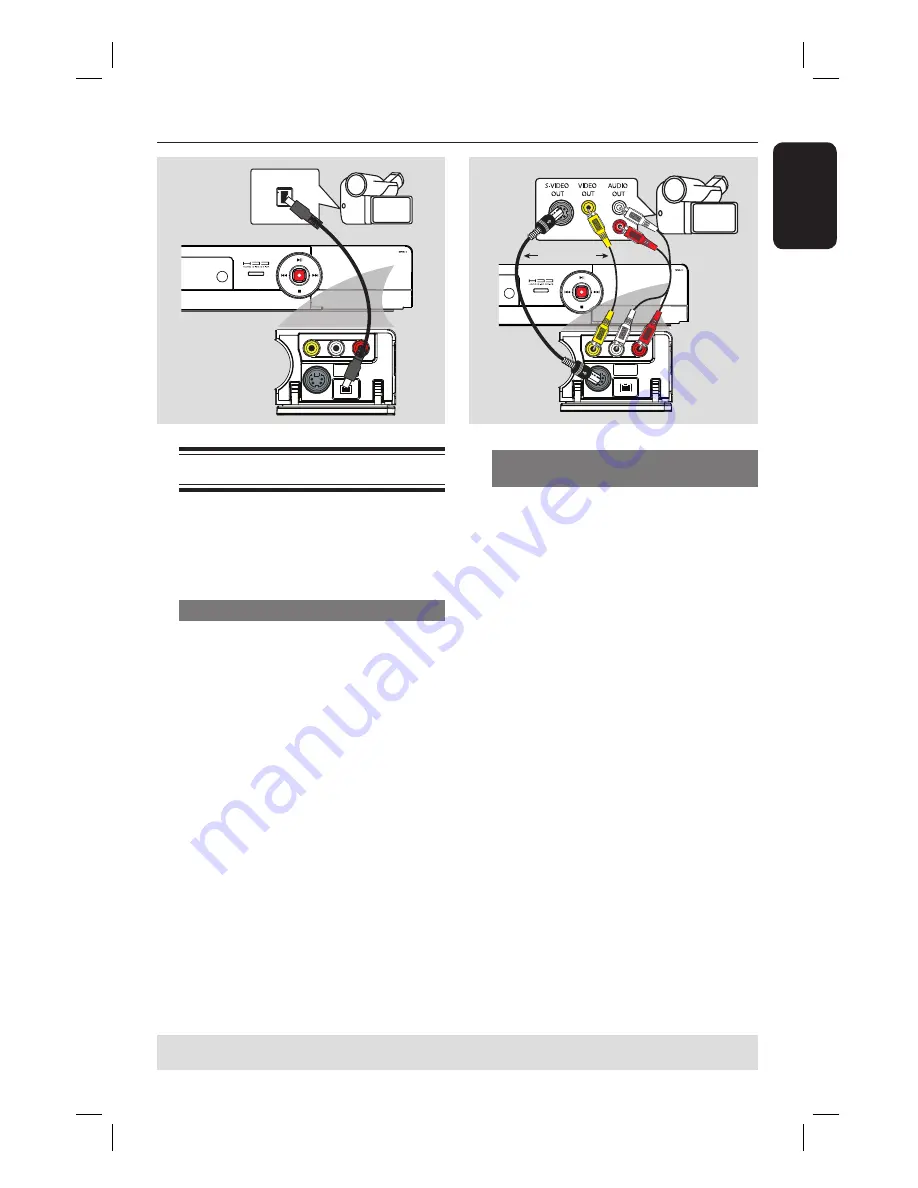
English
21
Step 2: Optional Connections
(continued)
Connecting a camcorder
You can use the front sockets to copy
camcorder recordings. These sockets are
located behind the fl ap on the right hand
side.
Option 1: Using the DV IN socket
Use this connection if you have a Digital
Video or Digital 8 camcorder. The DV
socket conforms to the i.LINK standard.
It provides the best picture quality.
Use an i.LINK 4-pin cable (not supplied)
to connect the
DV IN
socket on the
recorder to the appropriate DV OUT
socket on the camcorder.
Before you start, press
USB/DV
on the
remote control to select ‘DV’ as the
input channel. For recording, see “Record
on Hard Disk” or “Record on Recordable
DVD”.
Helpful Hints:
– The DV IN socket does not support a
connection to a Personal Computer.
– It is not possible to record from the
recorder to your camcorder via the DV IN
socket on your recorder.
Option 2: Using the S-VIDEO In or
VIDEO In socket
Use the VIDEO (CAM1) connection if
your camcorder has only a single video
output (Composite Video, CVBS).
OR,
you can use the S-VIDEO (CAM2)
connection if you have a Hi8 or S-VHS(C)
camcorder.
A
Connect the
CAM 1
or
CAM 2
socket
on the front panel of the recorder to the
corresponding Video or S-VHS output
socket on the camcorder.
B
Use an audio cable (red/white ends) to
connect the
AUDIO L/R
sockets on the
front panel of the recorder to the audio
output sockets on the camcorder.
Before you start, press
SOURCE
on the
remote control repeatedly to select
‘CAM1’ or ‘CAM2’ as the input channel,
depending on your connections. For
recording, see “Record on Hard Disk” or
“Record on Recordable DVD”.
DV OUT
L
R
TIPS:
Refer to the respective connected device’s user manual for other possible connections.
OR
B
A
dvdr3450h_eu_eng_24502.indd 21
dvdr3450h_eu_eng_24502.indd 21
2007-05-29 5:25:57 AM
2007-05-29 5:25:57 AM






























